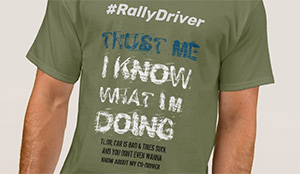Gravel and Kubica to meet in Portugal

Robert Kubica’s ERC debut in Gran Canaria was truly spectacular, from the sheer speed and immense talent to the bitter disappointment of losing it all due to the smallest of mistakes. For a rally debut of any kind, it doesn’t get any better than that. Well, okay, it does if you win it, of course, but Kubica’s performance and the fact that he actually returned to the very discipline that almost claimed his life, is a victory.
With all impressions from Rally Islas Canarias still very much alive, Kubica is now facing another challenge. And this one is, by all means, a bit different in nature. In fact, it’s so different that even Robert himself is struggling to predict what awaits him on the portugese stages. One thing is certain, there will be no tarmac!
On gravel, everything is different. Your pace notes are, again, extremely important, but unlike those made for tarmac rallies, on gravel you must learn to expand them further and include vital information about the surface conditions, safe and unsafe cuts, ruts, holes, rocks, water crossings, basically everything a gravel rally can throw at you, must be in your pace notes. Experienced crews can use very detailed notes even on tarmac rallies, and if you describe a single corner on tarmac with details such as severity, braking point, camber, entry line, etc., on gravel you will do well do include all or at least some of the things mentioned above. And if the weather hates you, like it did last year in Portugal, there is also the element of mud, puddles, changeable water crossings, and much more.
Needless to say, the car will also be set up differently for gravel. Suspension is softer and allows more travel, which affects the weight shifting under braking and during cornering. For someone used to firm and consistent grip on tarmac, this can be quite tricky to learn right away. From my understanding, on gravel, you need to work with the car more, and overly aggressive approach is not really the best option on the loose surfaces. Basically, once Robert sets few basic parameters, and learns the base difference between the levels of grip on tarmac and gravel, he should be able to adapt and learn quickly. Even though the surface is slippy and loose, there is grip to be had, tons of it – all it takes for a driver is to find it, respect it and use it wisely.
Tyres will also play a major role in Portugal, I suppose. As a Formula 1 driver, Kubica knows a thing or two about tyre wear, but again, this is gravel, and it has a unique ability to shred rubber in many creative ways. Even if rain stays away from Portugal this time around, tyres will play a very important part, especially for Kubica. Punctures are frequent on gravel rallies, and these can be very costly.
When I think of gravel rallies, I sometimes automatically assume that these events are physically much more demanding than tarmac ones. In reality, I suppose there is little difference, if you decide to ignore the fact that bumpy gravel stages will give your spine a nice workout. In fact, fighting with car on longer tarmac stages might be more demanding than doing the same thing on gravel, given the same temperature, but again, bumpy surface, dust and heat put extra pressure on gravel events.
It’s really hard to predict the outcome of Kubica’s first proper gravel rally. He is extremely talented driver with huge understanding of the car and it’s physics – as soon as he gets more familiar with the way grip works on gravel, I expect to see him set some serious stage times, or at least sections within stages. I am pretty sure there will be errors and problems, but I am also sure he is very capable of self control. It will take some time and a lot of patience before the real confidence kicks in, and with it, proper rally speed.
On the other hand, he could be instantly at home on loose stuff! As we already know, everything is possible with Robert Kubica!




